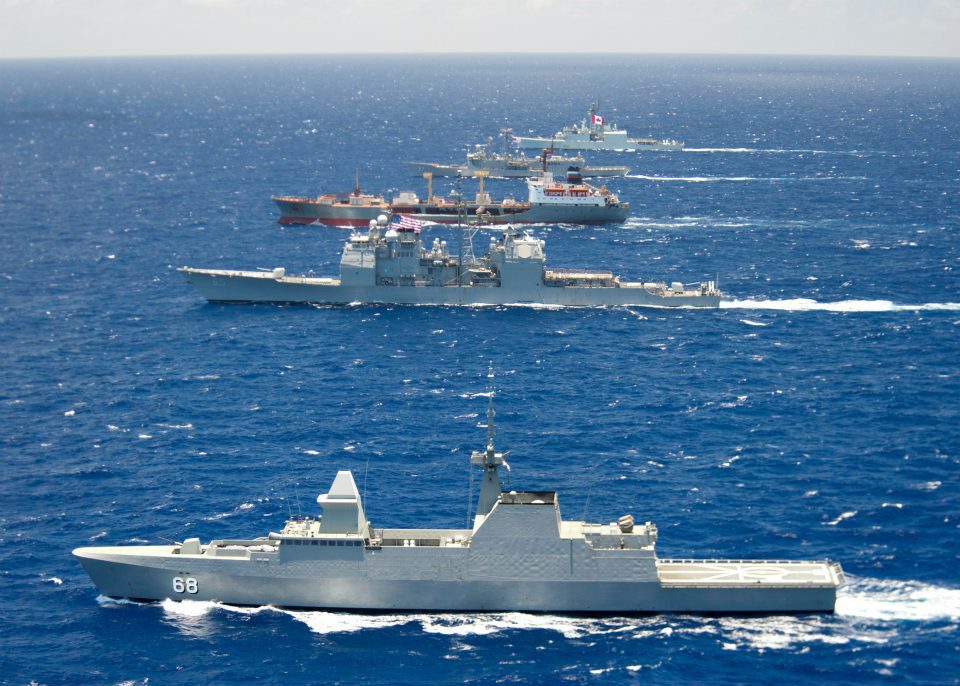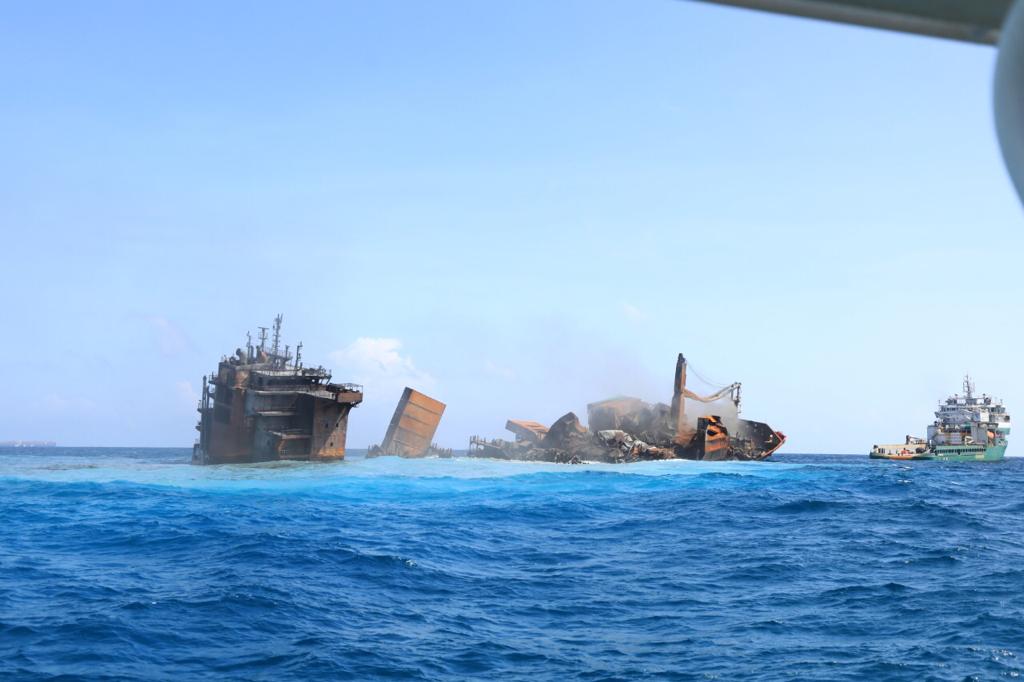(July 25, 2014) The aircraft carrier USS Ronald Reagan (CVN 76) leads a close formation of 42 ships and submarines from 15 international partnership nations during Rim of the Pacific (RIMPAC) 2014. (U.S. Navy photo by Mass Communication Specialist 1st Class Dustin Kelling/Released)
On Friday, the U.S. Navy, Marine Corps and Coast Guard released their new maritime strategy in Washington, D.C. at a forum sponsored by the Center for Strategic and International Studies and the U.S. Naval Institute. A follow-on to the 2007 version, the much anticipated A Cooperative Strategy for 21st Century Seapower: Forward, Engaged, Ready (CS-21R) is a thoroughly updated version seeking to meet the strategic challenges of our current and future maritime environment and fiscal realities. The strategy, linked here, charts a course for the future.
We are facing new challenges in the form of both non-state actors like transnational criminal organizations and terrorist organizations like ISIL, Al Shabab, and Al Qaeda, as well as nation states such as North Korea, Iran, and Russia. Cyber has emerged as a key concern that transcends the state and non-state divide. The strategy further gives a nod to environmental trends that may alter the maritime landscape.
Notably absent from the service chiefs’ discussion of the threat environment is the inclusion of China. While the strategy incorporates much concern about the maritime behavior of the Chinese, it appears the sea services are optimistic about working with China to build a cooperative maritime environment.
The strategy is forward-thinking and reflects a realization of the importance of cooperation with maritime allies and partners around the world. It has already been released in seven languages: English, Japanese, Korean, Mandarin, French, Arabic, and Spanish. This reflects both the current desire to work with partners to strengthen ties as well as the fiscal realities facing the United States today. Though still the preeminent global maritime force, the leaders of the tri-services have realized the U.S. simply cannot press forward alone.
Drawing upon the foundational nature of forward presence in the 2007 maritime strategy, the revised version acknowledges both the necessity of ensuring freedom of the seas – and access for U.S. forces – and the need to strengthen ties with partners around the world. The international maritime community faces a wide spectrum of challenges that threatens the global sea lanes, ranging from piracy and illicit waterborne trafficking to terrorist activity or high-end conflict. Global economic stability depends on maritime partnerships and cooperation in the hyper-connected world we live in today. This strategy underscores the absolute necessity of a global network of navies to join together to tackle common threats.
Geographically, the strategy includes a significant focus on the Indo-Asia-Pacific, a subtle re-branding of earlier emphasis on the Asia-Pacific that acknowledges the importance of the growing Indian navy and complexities with neighboring countries like Pakistan. The theme reiterates the U.S. Navy’s emphasis on the region as more than 60% of ships and aircraft will be realigned to the region by 2020. The Marines and Coast Guard will also continue to increase their presence in the region, building ties and strengthening regional partnerships with a goal of ensuring long-term security of the global economic system.
The decision to send the most advanced platforms to the region first indicates a recognition of the advancing capabilities of China – while not a direct threat according to the strategy, there is an undeniable concern surrounding the often belligerent action of the Chinese in maritime hotspots like the South China Sea.
While strengthening global ties with partners and allies is important, the strategy does not lose sight of the primary objectives of a military force. It takes a serious approach to the capabilities our future threat environment will require. Gone is the humanitarian assistance and disaster relief core capability of the 2007 strategy.
War-fighting has emerged supreme with a focus on ensuring the following pillars:
All Domain Access – a response to the anti-access/area denial (A2AD) challenges the future undoubtedly holds. While the term Air Sea Battle (ASB) has been replaced with the more cumbersome JAM-GC, the ASB concepts have clearly influenced this emphasis on prioritizing capabilities,
Deterrence – emphasizes both nuclear and conventional forces to deter conflict. From forward deployed Carrier Strike Groups and Marine expeditionary combat power to Coast Guard presence in ports and waterways, the U.S. expects naval forces to offer a range of credible deterrence.
Sea Control – focuses on naval forces establishing local maritime superiority by employing a wide range of warfighting capabilities to both deny or destroy enemy forces, but also to protect vital sea lanes to ensure global commerce remains unencumbered.
Power Projection – while traditionally thought of as the ability to conduct strikes against targets ashore, the strategy incorporates “smart power” missions ashore like humanitarian assistance and disaster response, as seen in disasters like the 2011 tsunami in Japan or 2013 typhoon in the Philippines.
Maritime Security – encompasses a wide array, from combatting terrorism, piracy, and illicit trafficking to maintaining freedom of navigation around the globe. Notably, this pillar offers the greatest opportunity for collaboration with allies and partners, as all maritime nations have a vested interest in ensuring global maritime security.
In an acknowledgement of the current fiscal environment – and subsequent debates on fleet size – the service chiefs have included a force design section which sets a fleet level required to support global requirements. Perhaps optimistic given the current battle force of 275 ships, it uniquely sets minimum acceptable force numbers – something not present in the previous strategy. It calls for “more than 300 ships, including 11 aircraft carriers, 14 ballistic missile submarines (replaced by 12 Ohio Replacement Program SSBN(X)), and 33 amphibious ships, while the Coast Guard must maintain a fleet of 91 National Security, Offshore Patrol, and Fast Response Cutters.” Failure to meet such fleet levels would require “hard choices” to be made, which range from increased risk to decreased presence.
Overall, the strategy offers careful consideration of the current and future threats and implications for U.S. naval forces. It charts a course for a future that must navigate an increasingly varied and dangerous maritime security environment while balancing high-end war-fighting capacity required to win a war at sea, even in a fiscally constrained environment.

 Join The Club
Join The Club











